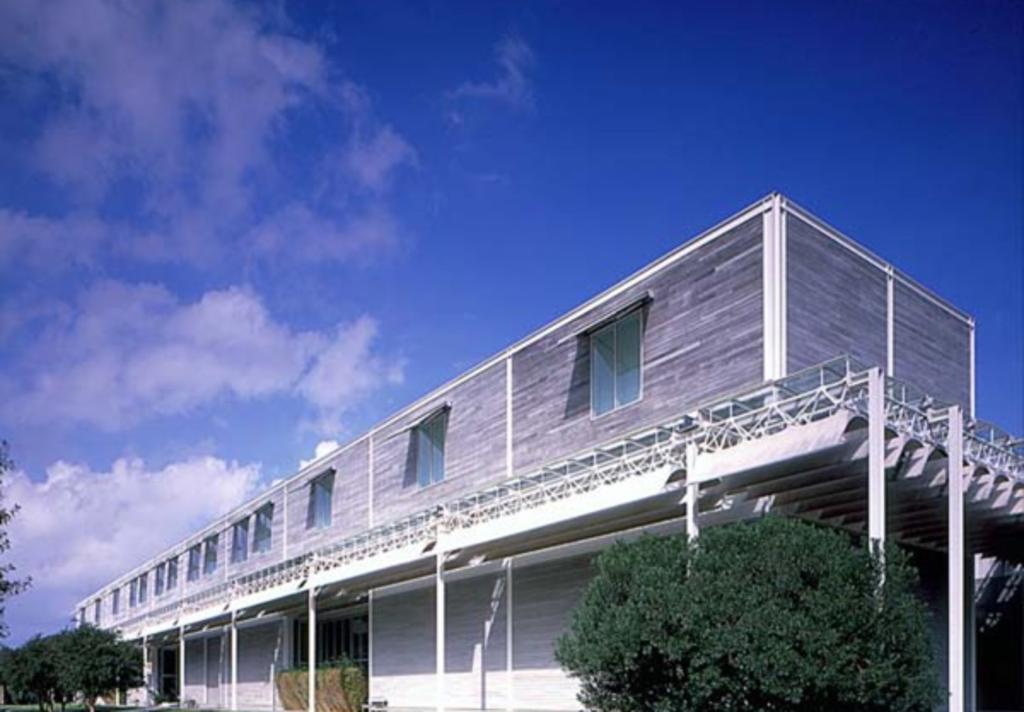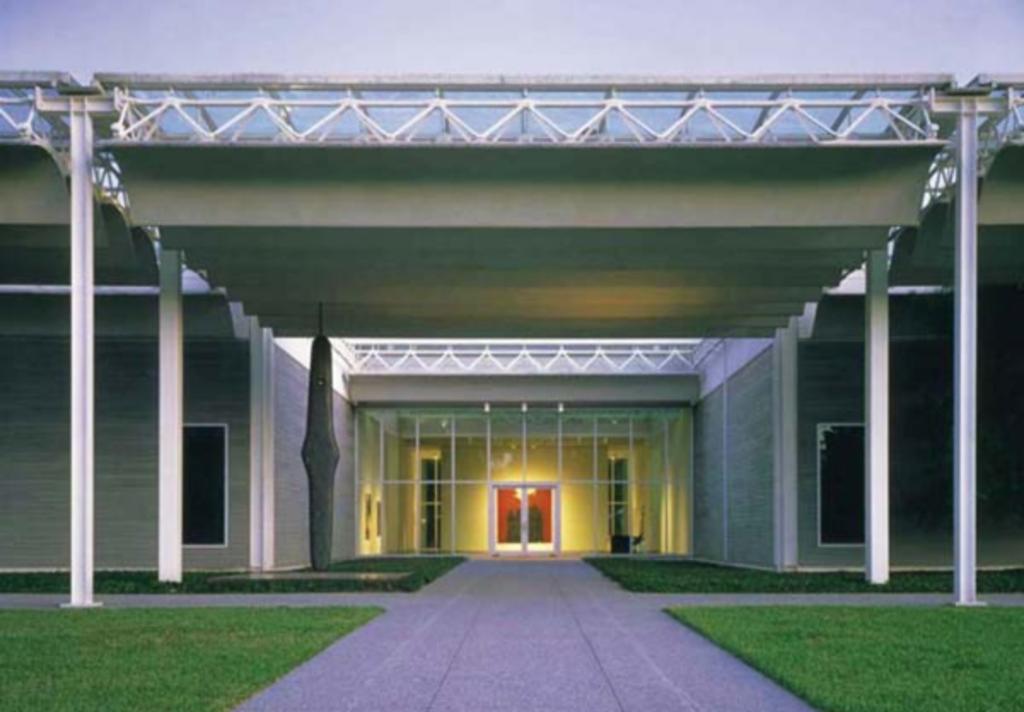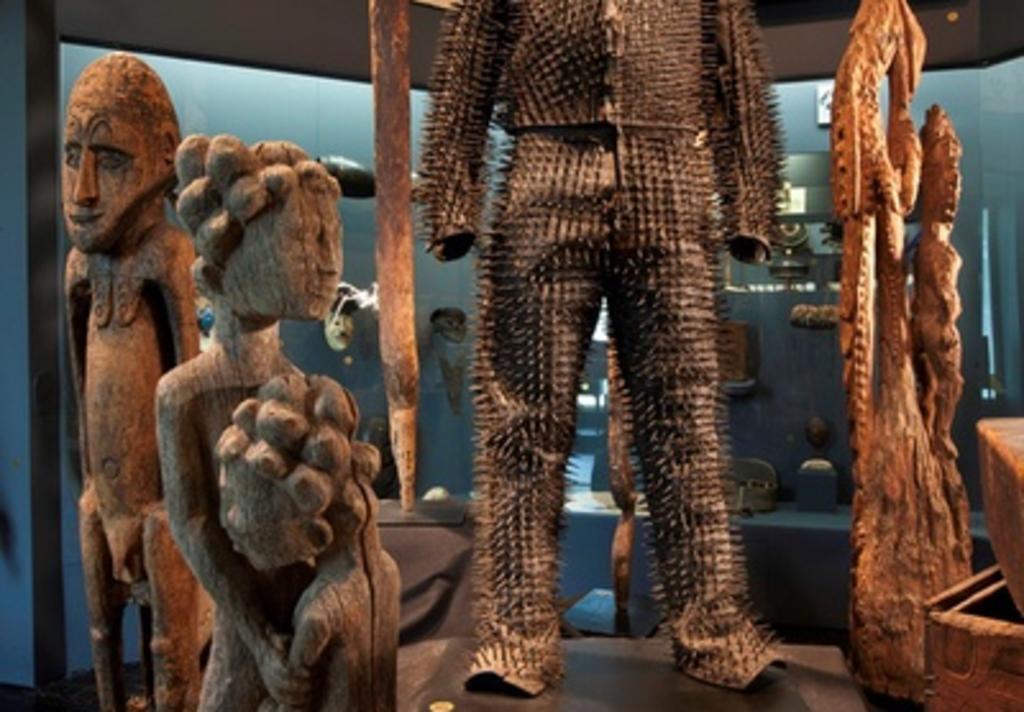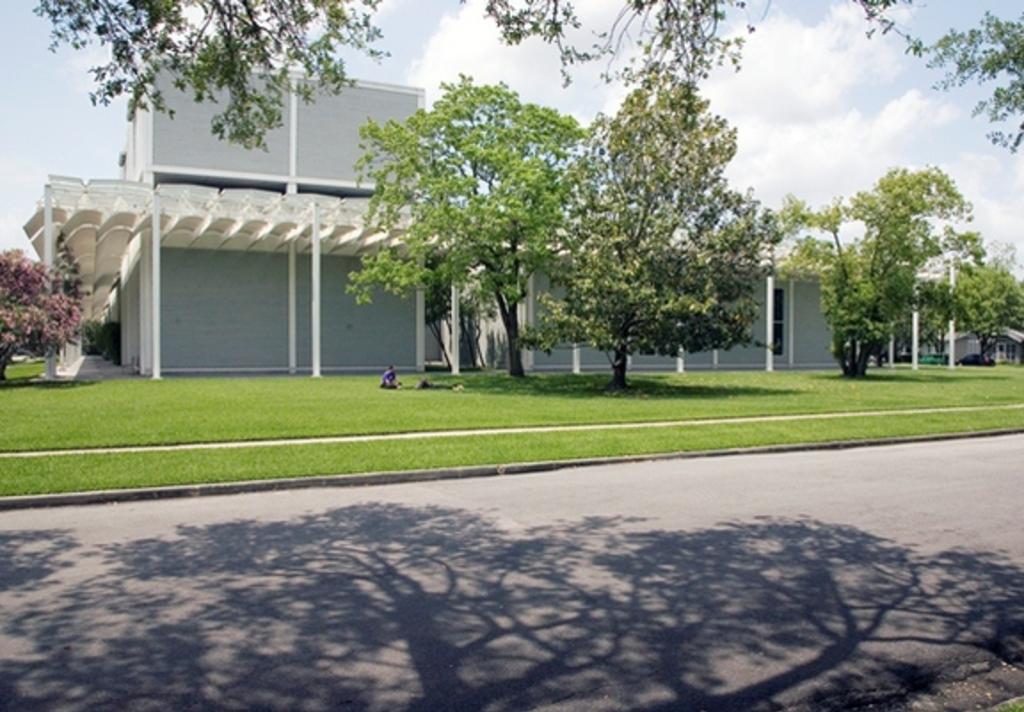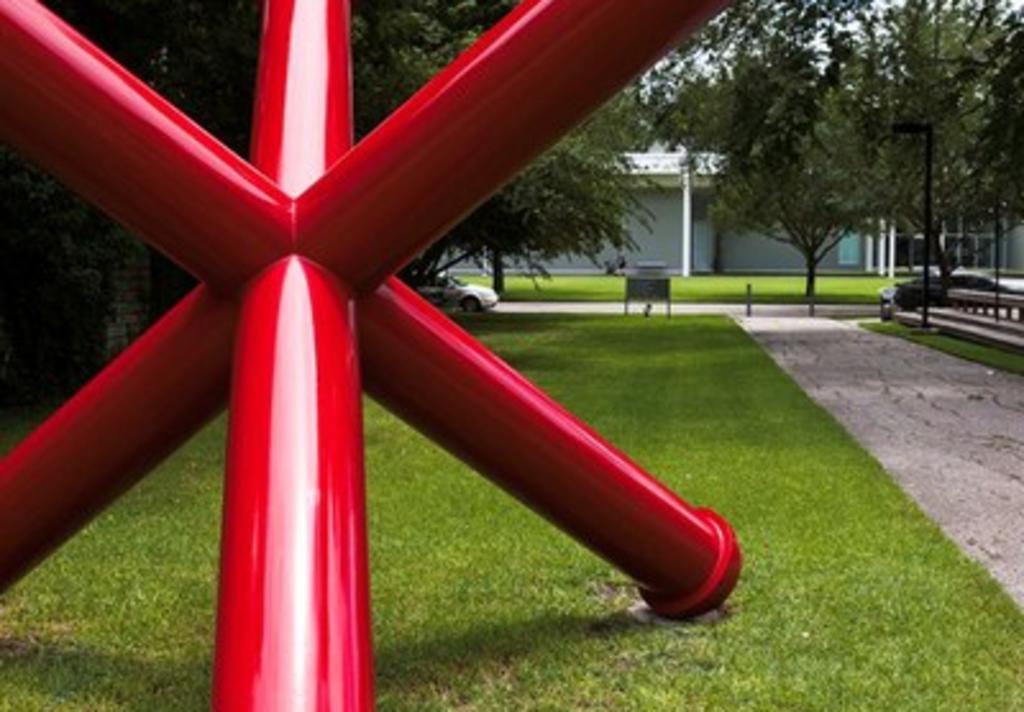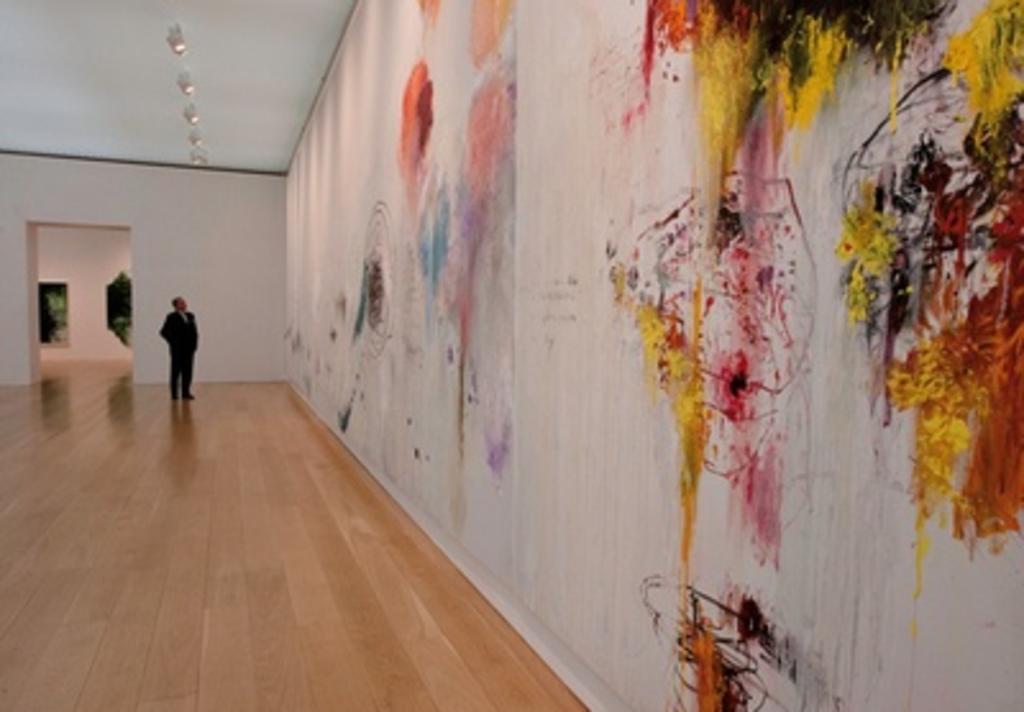The Menil Collection
- Address:
1533 Sul Ross Street
Houston, TX 77006 - Phone:
(713) 525-9400
The Menil Collection opened to the public in June 1987 as the primary repository of John and Dominique de Menil’s private collection. One of the most significant of the twentieth century, the collection consists of nearly 15,000 works dating from the Paleolithic era to the present day. Although historically vast, it uniquely resists the conventional museum model of the encyclopedia. Instead, within the four areas that largely define the collection—Antiquity, Byzantine and Medieval, Tribal, and Twentieth-Century Art (with a concentration in Surrealism)—one finds a selective approach to acquisition that yields depth with regard to particular areas and artists.
John and Dominique de Menil collected through serendipitous encounters and deep inclinations. Fleeing Nazi-occupied France in 1941, they settled in America where John managed Schlumberger, Ltd., founded by Dominique’s father and uncle. Here, they met three influential figures—Father Marie-Alain Couturier, a Dominican priest; Alexandre Iolas, owner of the Hugo Gallery; and Dr. Jermayne MacAgy, a progressive scholar. With their guidance, the de Menils began to collect modern art. Throughout the years, their interests expanded into other areas now represented in the collection, with an increasing focus on sacred objects. Also somewhat modestly collected was the art of sixteenth- and eighteenth-century Europe and the colonial New World.
As early as 1950, the de Menils began curating and lending works to critically acclaimed exhibitions. It was not until nearly twenty-five years later that the desire to permanently install their collection arose, stemming in part from an increased disillusionment with conventional museum practice. In 1972, the de Menils engaged the architect Louis Kahn to design a building for the collection, but his plans were abandoned after John’s death in 1973. Yet Dominique did not relinquish the idea and continued to pursue it on her own. Commissioned in 1980, Italian architect Renzo Piano responded to her singular vision to preserve the unmediated intimacy she had enjoyed with the works. The result is a museum both spiritual and organic. Of human scale, yet spacious, it is at once self-effacing and sanctified.
Several other important spaces accompany the museum. In February 1995, the Menil Collection, in collaboration with the artist Cy Twombly and the Dia Center for the Arts, New York, opened the Cy Twombly Gallery, an exhibition annex designed by Renzo Piano housing a permanent installation of Twombly’s art. Since November 1998, Richmond Hall has housed one of only two permanent Dan Flavin installations in America; this installation was Dominique’s last commission before her death in 1997. The Rothko Chapel, founded by the de Menils, was dedicated in 1971 as an intimate, nondenominational sanctuary. The chapel was designed by Howard Barnstone based on an earlier design by Philip Johnson and houses fourteen Mark Rothko paintings.
Collections
Antiquities
“Retracing the history of man fascinates me, as though some clue to our existence could thus be found,” Dominique de Menil once wrote. The Menil’s selection of antique art embodies this philosophical stance. Including works from Paleolithic to later pre-Christian eras, the collection consists of historical material primarily from Europe and Asia Minor. The Mediterranean tradition, while not completely excluding Greco-Roman art of the Classical period, emphasizes pre- and post-Classical cultures from Bronze Age Asia Minor, the Cycladic Islands, and Archaic Greece. Also emphasized are Hellenistic and Roman art from Asia Minor and Egypt.
Byzantine and Medieval
Following John de Menil’s death in 1973, Dominique’s interests turned to art that is infused with theological meaning and spirit. Byzantine artifacts and icon paintings, along with a small selection of medieval art, now account for approximately 2,000 works of the Menil Collection. Culled primarily from the Mediterranean world, Asia Minor, and Russia, they provide a survey of European art informed by medieval aesthetics. Included are a number of priceless works, such as a gold casket from early sixth-century Macedonia, very few of which are still in existence. With its small dimensions and ascetic design, this piece most likely functioned as an early Christian funerary object. Also among the holdings is an important sixteenth-century Russian icon, Saint George and the Dragon. This work not only depicts one of the most popular saints of all Christendom, but shows him during his most legendary action. Displaying a masterful style, it is one of the best exemplars of the school of Novgorod.
Tribal
Among the multifarious influences on modernism, tribal art is perhaps one of the most significant. Already deeply familiar with Cubism and Surrealism, the de Menils began to consider and acquire the art of primitive cultures. They delighted in its conceptual complexity and aesthetic elusiveness; the creative form and style as well as the incomprehensible mystery of these objects engaged them. The influence of tribal art on Surrealism in particular can be seen in “Surrealism & Witnesses.” A large part of this permanent installation—approximately 200 authentic and fabricated curiosities that inspired the Surrealists—consists of tribal art. Exceptional among the Menil Collection’s holdings are examples of ancient Malian art, dating between the eleventh and nineteenth centuries. These perplexing works are distant in time, place, and sensibility from traditional African art. Also represented is a large selection of obscure Oceanic works. With its sacred Chinese and Malaysian themes, this art in particular nurtures the museum’s spiritual dimension. Both northern and southern styles of the Pacific Northwest coastal art also abound. From meticulously executed masks to daily essentials such as combs and bowls, the works are both practical and elegant, narrowing the boundary between art and life.
Twentieth-Century
The collection of twentieth-century art focuses on European modernism, Surrealism, and American postwar art. Primarily due to the influence of Father Marie-Alain Couturier, a key figure in the great mid-century commissions of modern art by the Catholic Church, the collection is centered within the School of Paris. By 1945, Father Couturier had introduced the de Menils to the art of Georges Braque, Paul Cézanne, Fernand Léger, Henri Matisse, and Pablo Picasso, all of which they enthusiastically bought. Attesting to their personal manner of collecting is the concentration in Cubism and Neo-Plasticism, while German Expressionism is entirely absent. Alexandre Iolas, a Surrealist art dealer in New York, simultaneously cultivated the de Menils’ interest in Surrealism. The most comprehensive within the museum, the Surrealism collection covers Magical Realism, automatism, and the depiction of seemingly opposite subjects.
Continuously exhibited is the world-renowned art of Giorgio de Chirico, Salvador Dalí, Marcel Duchamp, Max Ernst, Man Ray, Matta, Joan Miró, Francis Picabia, Pablo Picasso, and Yves Tanguy. Rare Surrealist publications by André Breton, Paul Eduard, and Julien Levy are also part of the collection. Highlights include “Surrealism & Witnesses,” a changing installation of approximately 200 objects from both the Menil and private collections. A kind of Wunderkammer [room of wonders], it features both authentic and fabricated curiosities that once captivated the Surrealist artists. Within the haunting room, viewers “witness” the indigenous functions of the objects. Also installed are rare documentary photographs of the artists and their mysterious drawings. American art from mid century forward had become a major focus by the 1960s. Notable is the commitment made to the art of Barnett Newman and Mark Rothko. These artists’ fascinating innovations in abstraction, along with those of Jackson Pollock and Clyfford Still, challenged the form and style of the de Menils’ first acquisitions of European modernism. Artists from the second generation of the New York School also form a major presence. Collected in depth is the work of Joseph Cornell, Robert Rauschenberg, Cy Twombly, and Andy Warhol. Also acquired was the work of Jasper Johns, whose painting Voice, 1964–67, was John de Menil’s last acquisition before his untimely death in 1973.
Cy Twombly Gallery
In February 1995, The Menil Collection, in collaboration with the artist Cy Twombly and Dia Center for the Arts, New York, opened the Cy Twombly Gallery, an exhibition annex housing a permanent installation of Twombly’s art. Born in 1928 in Lexington, Virginia, Twombly studied art at the School of the Museum of Fine Arts, Boston (1947–49); the Art Students League, New York (1950–51); and Black Mountain College in North Carolina (1951–52). In the mid 1950s, following travels in Europe and Africa, Twombly emerged as a prominent figure among a group of artists working in New York that included Robert Rauschenberg and Jasper Johns. In 1959, Twombly settled permanently in Italy. He has had numerous one-person exhibitions internationally and has been the subject of major retrospectives in both Europe and America.
Twombly‘s painting combines elements of gestural abstraction, drawing, and writing in a very personal expression. At once epic and intimate, his work is infused with references to literature and aspects of the Mediterranean and Near-Eastern worlds. The building houses more than thirty of Twombly’s paintings, sculptures, and works on paper, dating from 1953 to 1994. Among these are a number of his key, large-scale masterworks such as The Age of Alexander, 1959–60, Triumph of Galatea, 1961, and the monumental painting Untitled (Say Goodbye Catallus, to the Shores of Asia Minor), 1994.
The gallery, designed by Renzo Piano, has a sophisticated roofing system that allows for an even diffusion of natural light. An external canopy of fixed louvers first breaks the sunlight over a sloping, hipped glass roof. Passing through ultraviolet filtering glass, the light is controlled by mechanical louvers and finally dispersed within the galleries by the stretched cotton fabric ceiling.
The Cy Twombly Gallery is a joint project of The Menil Collection, Dia Center for the Arts, and the artist.
Richmond Hall
Since November 1998, Richmond Hall has housed the penultimate work by the Minimalist sculptor Dan Flavin (1933–96), one of the most innovative artists of the second half of the twentieth century. Except for an installation in Bridgehampton, New York (created in 1985 by the Dia Art Foundation), Flavin’s work at Richmond Hall is the artist’s only permanent installation in the United States.
Born in New York City, Flavin was virtually self taught as a visual artist. With contemporaries such as Carl Andre and Donald Judd, Flavin employed industrial materials to redefine sculpture in the 1960s. Flavin’s first foray into the use of fluorescent light, the diagonal of May 25, 1963 (to Robert Rosenblum) (1963), introduced his mature period in which he explored a new sense of space that, in his words, "could be disrupted and played with by careful, thorough compositions of light."
By selecting light as his medium, Flavin connects the viewer to one of the most elemental components of existence. Using standard electrical fluorescent tubes, in various combinations of size and color, he investigates the dichotomy between the concrete, revealing the actual tubes and fixtures, and the ethereal, capturing the indefinable dimension of light in space.
The final commission of Dominique de Menil, Flavin’s Richmond Hall installation actually consists of three site-specific art works from 1996. Running along the top of the east and west exterior walls of the building (constructed in 1930 as a grocery store) is a "frieze" of green fluorescence. Inside, the angled foyer walls hold matching sets of white eight-foot fixtures, mounted diagonally. The vast interior is flanked on opposing east and west walls by four-foot fixtures composed of vertically mounted alternating pink, yellow, green, and blue lamps, bisected by a horizontal line of filtered ultraviolet. The stark simplicity of the geometric arrangement creates a complex, rhythmic blending of color, light, and perspective.
The Menil Bookstore
Following a two-month renovation, The Menil Bookstore is back in business with expanded offerings and a well-respected, new Bookstore Manager, Paul Forsythe. Located in a free-standing bungalow, away from the museum, the newly-painted Bookstore stocks an assortment of art tomes, special gift items and a children’s section with games, puzzles and toys. Join other art enthusiasts there on nice Houston afternoons, when the Bookstore’s well-shaded patio provides prime real estate for museum-goers. The shop is open during museum hours—Wednesday through Thursday, 11 a.m. to 7 p.m.

“The Iconic Portrait Strand by Nestor Topchy” Exhibition Reception
Museums and Attractions
- Hours: Wednesday through Sunday 11am-7pm
- Admission: Free
- Free:
- Gift Shop:
- ADA Accessible:
- Motorcoach Parking:
Venues
- ADA Accessible:

